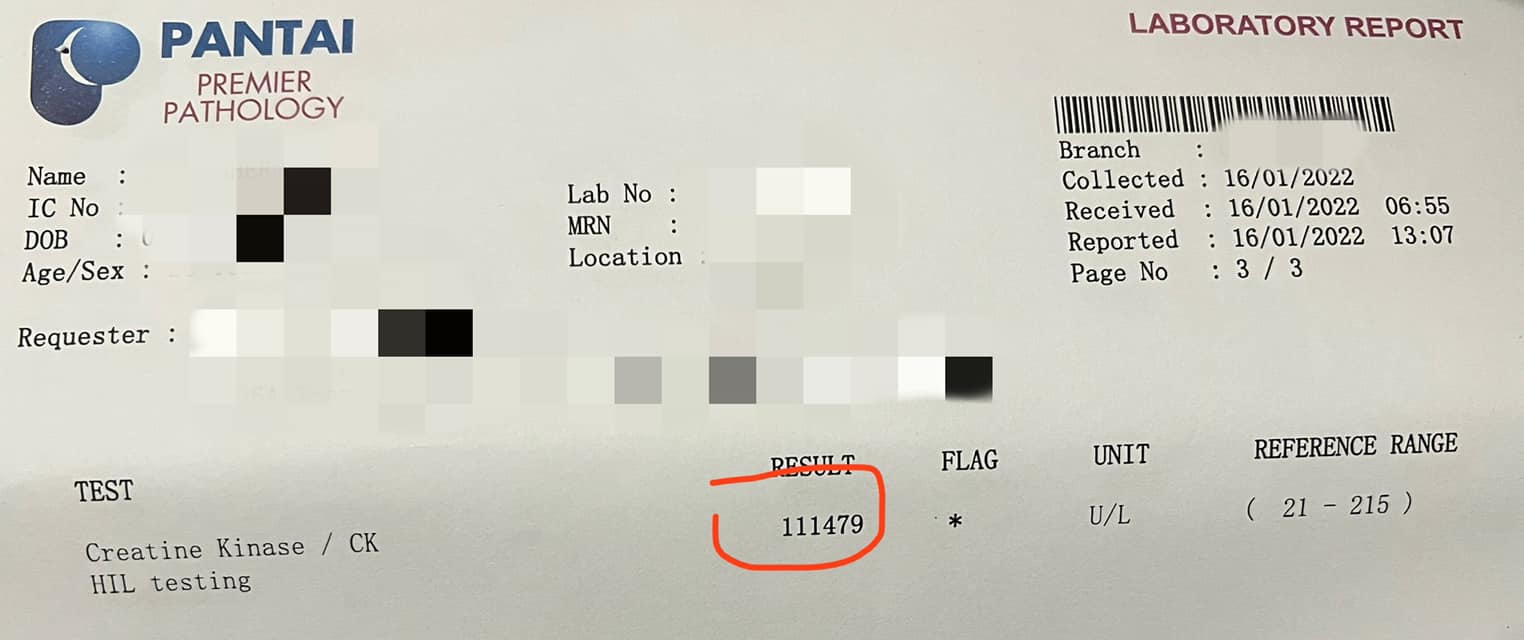For many of us seeking out for a healthier lifestyle, sticking to a regular exercise regimen tends to be an obvious step to take after taking your dietary habits into consideration. After all, constant exercise is by far the best way to help burn away excess calories from your meals while also helping to regulate a whole host of other crucial bodily functions.
M’sian woman lands in hospital for 6 days after spin class
But with that being said, it is important to remember that it is equally paramount to put your own safety first when at the gym and avoid overexertion, as much as it is important that you are able to meet your own fitness aspirations. Just recently, netizen Shern Lynn took to Facebook to share her own experience with overexertion during a fly cycle aka spin class that eventually landed her in the hospital for over 6 days.
In her post, Lynn recounts how she had decided to sign up for a beginner’s spin class, adding that she hadn’t exercised strenuously for a period of time. For those not in the know, fly cycle refers to indoor cycling exercises that uses stationery exercise bicycles with a weighted flywheel.
Joining a 45-minute session, Lynn started experiencing difficulties in keeping pace with the rest of the class after 15-minutes in and decided that she would take things slow instead.
“I didn’t force myself to challenge my own limits,” she said.
Felt muscle soreness days after her spin class before her urine turned brown
Upon completing the class, she got off her exercise bike and realised that her legs felt weak. But when she was told that this was simply a common side effect from the exercise, she paid it no mind and went home. In fact, she continued to feel what she thought was typical muscle aches from working out a day after the class, and had to start walking around with a limp.

The pain continued to persist and in fact worsened on the second day after the fly cycle class, keeping her awake at night. Assuming that it had to get worse before it would get better, Lynn didn’t think much of it. On 13th January 2022, things took a turn for the worse when she realised that not only did she continue to feel pain in her thighs, her urine had even turned into a deep brown colour.
“I was absolutely horrified and immediately consulted ‘Doctor Google’. The more I read, the more I felt that I could be suffering from Rhabdomyolysis.”
Rhabdomyolysis is explained as the rapid breakdown of skeletal muscle fibers, resulting in the leakage of muscle contents into your body’s circulation. One of the most common symptoms as a result of this syndrome is dark-brown urine.
While she was aware that the syndrome required medical attention, Lynn said that she decided to wait things out until the next day as it was already quite late at the time, hoping that her condition would improve.
Wound up being warded for Rhabdomyolysis after her bloodwork came back abnormal
But upon waking up the following day, her urine turned to an even darker shade of brown, prompting her to immediately seek out for medical attention. Upon arriving in hospital, her doctor had advised her to remain warded for observation to ensure that her kidneys were not damaged. After conducting a blood test, it was found that Lynn’s creatine kinase (CK) levels were over 1,000+, which was far above the normal limit of around 200 in grown adults. Her urine had even turned into a pink hue as a consequence.

According to her doctor, the only way to recover from Rhabdomyolysis was to consume plenty of fluids and allow the body to purge the enzymes naturally by passing urine. This would also reduce her chances of suffering from kidney damage. In order to do so, Lynn was not only put on an intravenous drip but was also told to record the times and amounts of fluids she would consume in a day.
“I went to the bathroom over 30 times in a single night!”

Three days after she was admitted to hospital, on 17th January 2022, a second round of her bloodwork results came back and indicated that her creatine kinase (CK) levels had risen even further than before. Her liver function tests also showed drastic increases as well. Concerned for her wellbeing, her doctor instructed her to remain warded for another few days.
She had even faced difficulties sleeping from the pain and constant urge to use the bathroom.

Finally, after three days of consuming fluids to help drain away the toxins from her body and repeated blood tests to ascertain her CK levels were back to normal, Lynn was finally discharged from the hospital.
But how can you avoid Rhabdomyolysis when working out?
Given her experience, she cautions would-be spin class participants to ensure that their bodies can handle the strain of these exercises before participating in them, as cases of overexertion can easily lead to Rhabdomyolysis. Lynn also reminds that like all things, one should exercise moderation when… well, exercising!
In speaking with a professional spin cinstructor, Wau Post was informed that cases of Rhabdomyolysis are not uncommon. However, it is important to note that it isn’t the spinning that causes the condition, but rather any form of high intensity workout that causes muscle breakdown.
And while there is no one-way to prevent the condition, she advises gym-goers to always keep hydrated throughout the exercise, avoid high-intensity exercise routines if you are new to working out, and to warm-up thoroughly before exercising.
For more stories like this, follow us on Facebook!








